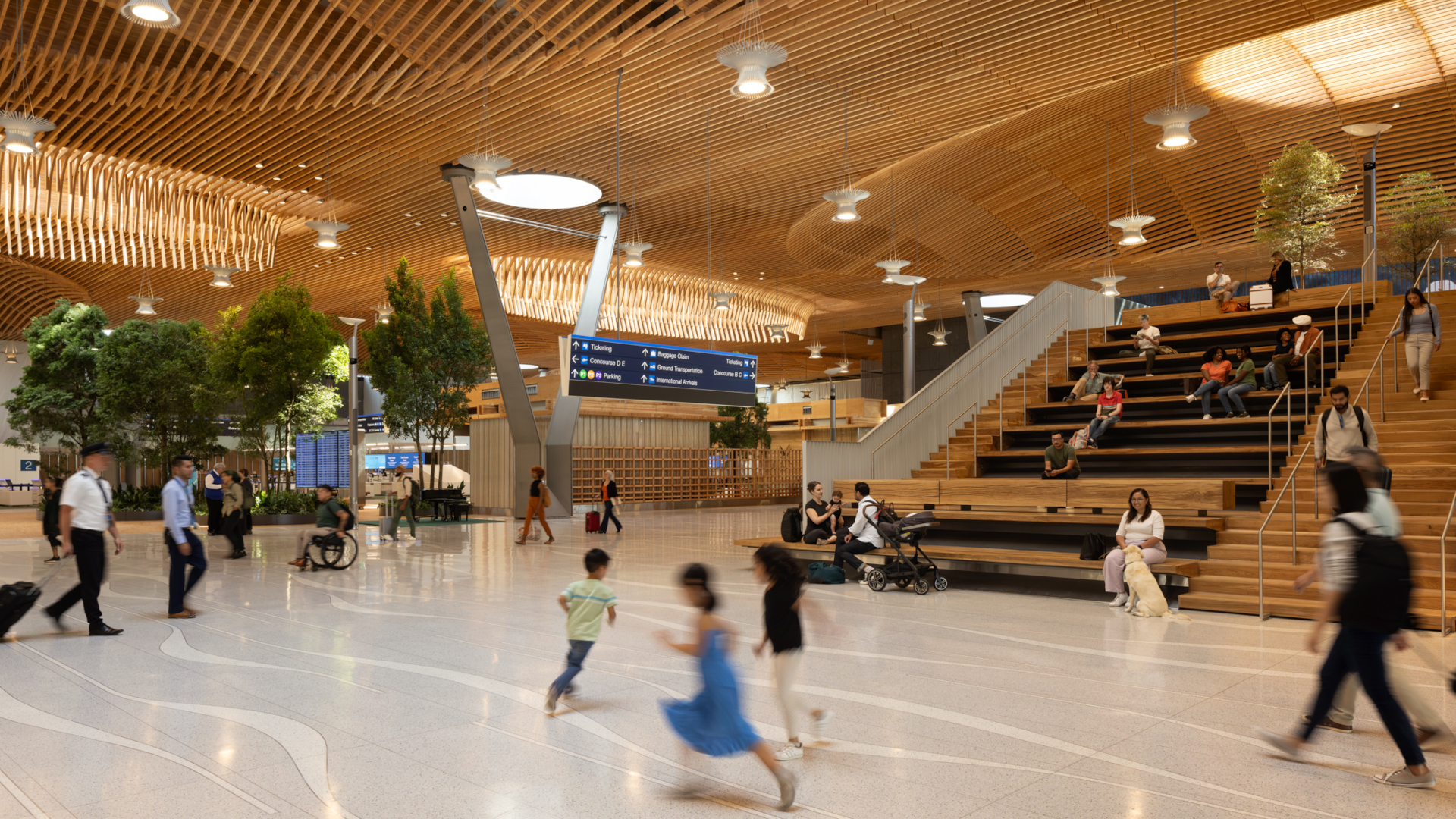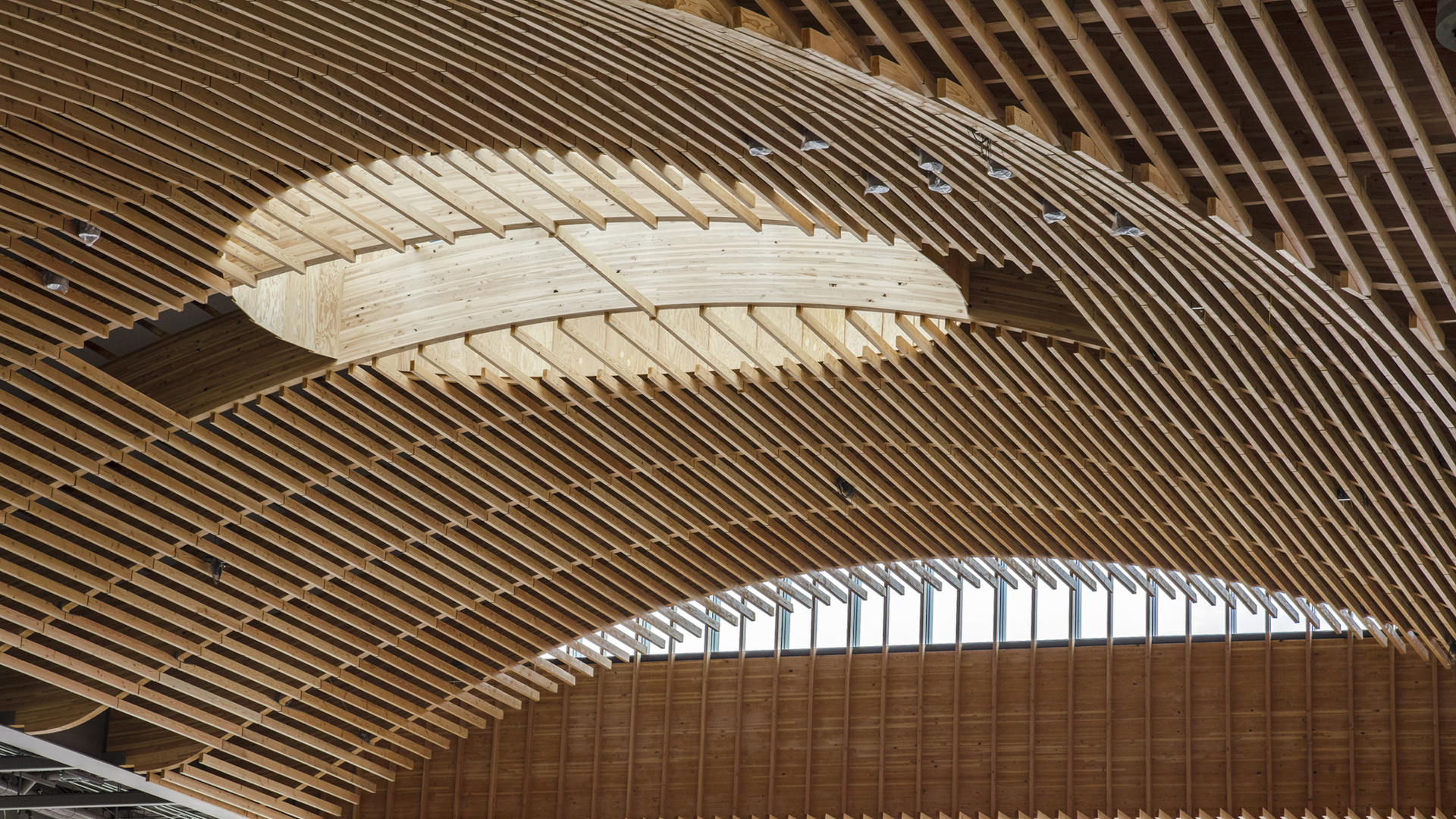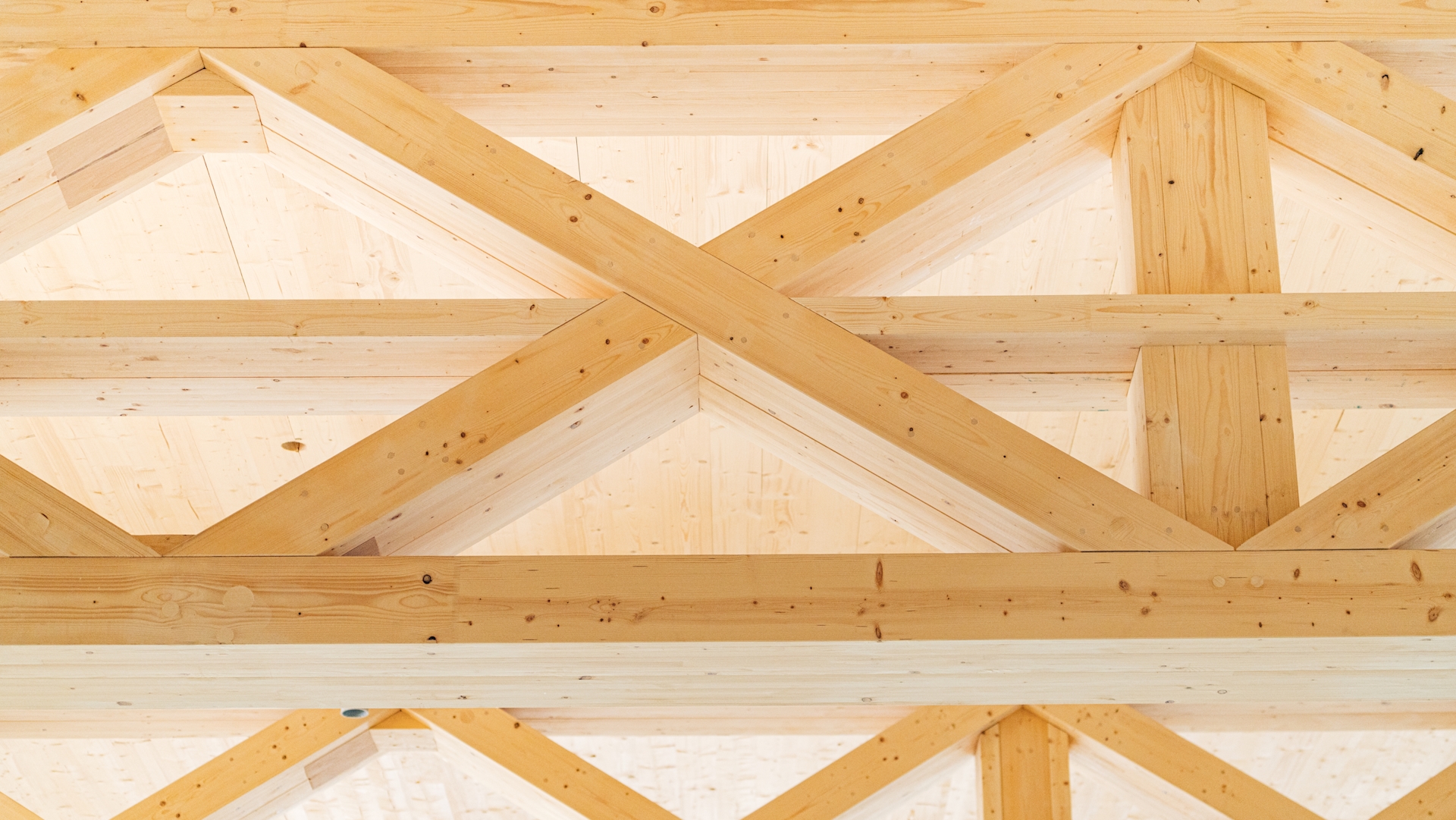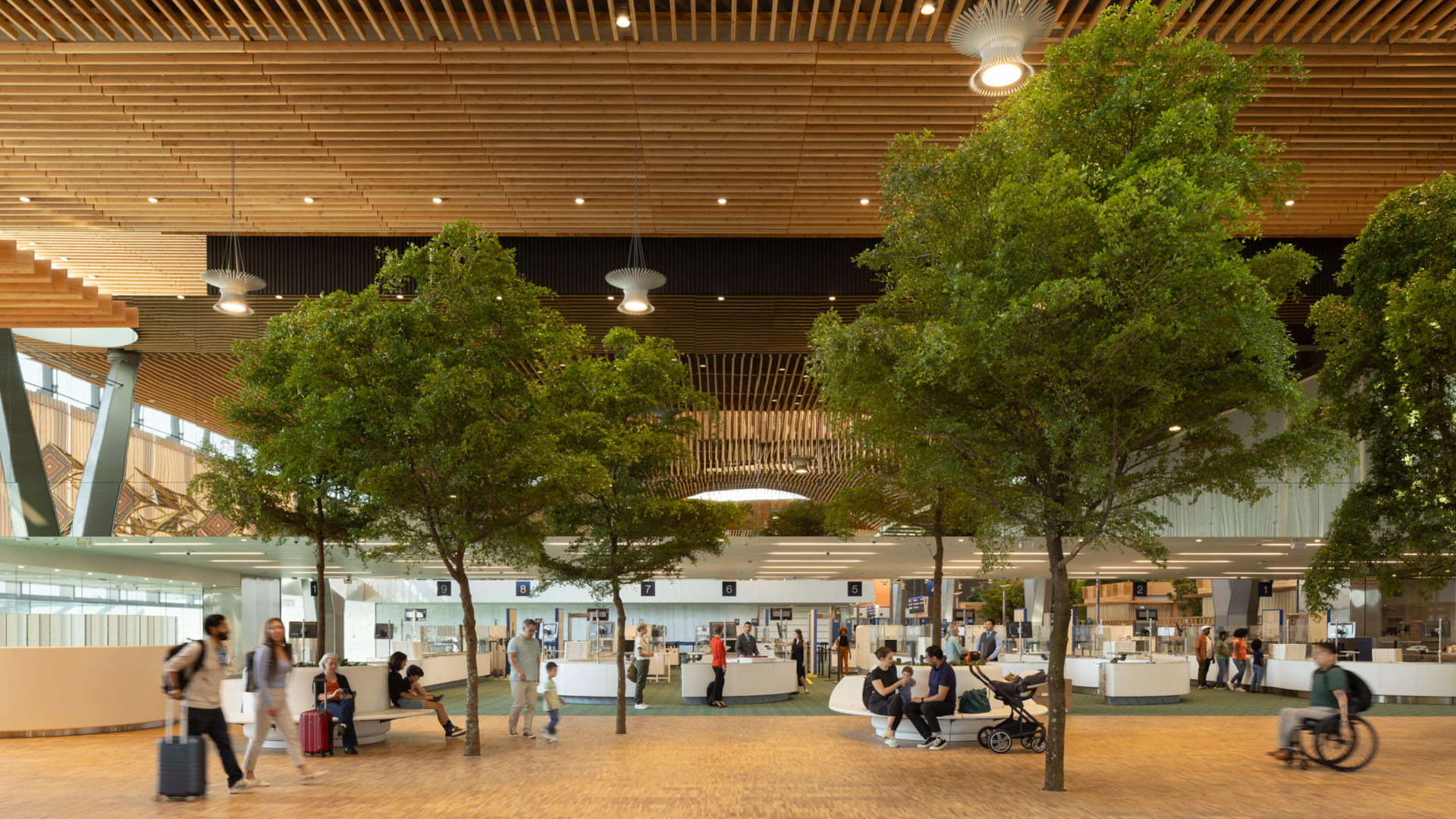

Portland International Airport (PDX)
Wood is one of the world’s oldest building materials, but in recent years it has found a new, modern application in the form of mass timber structures.
In the latest episode of the Shaping Sustainable Places podcast, we speak with two experts who attended the recent International Mass Timber Conference in Portland, Oregon, to learn what progress is being made introducing mass timber and associated technology to a wider audience. Mass timber specialist Erica Spiritos is the Director of the Washington Mass Timber Accelerator and has been working to expand mass timber ecosystems, while Stewart Germain is Director of Innovation and Sustainability for Skanska USA Commercial Development.
Role for public sector
Erica says a key message from the conference was that mass timber can be part of the solution to housing availability and environmental challenges, and that its use should be accelerated. She tells how speakers at the conference suggested that the public sector could play a role in this by mandating mass timber for public buildings, including it in carbon policies, modernizing building codes, providing low-cost capital for mass timber projects, and by creating density bonuses when mass timber is used.
Erica says that while the potential for mass timber is enormous, there are still challenges to be overcome. In the North American market, for example, there is a diverse range of wood types being used in mass timber projects, each with different properties. A limited number of timber manufacturers, meanwhile, means designs may have to be radically changed if a particular manufacturer – and the timber product they supply – is unavailable. These problems are gradually being solved by professional tools that list the properties of available timbers for use in design calculations, and a growing base of mass timber suppliers.
What’s glulam?
Some background on mass timber products can help here: By gluing together multiple layers of wood with the grain running either parallel (glulam beams and columns) or at right angles (cross laminated timber panels), manufacturers have been able to create building components with remarkable strength and beauty that can replace concrete and steel in many applications.
Growing interest
Stewart Germain says public interest in mass timber structures is extremely high. While the approach was once only used for one-off projects, it’s now maturing and becoming more commonplace in regular buildings like schools and apartment blocks.
He explains one challenge in the further expansion of the technology is a lack of standardization in the properties and sizes of mass timber components. Specifications tend to differ from project to project, creating extra work for designers and builders. Stewart says, thankfully, there is a trend towards increasing greater consistency around how elements are assembled and the types of mass timber components used for particular applications.
Stewart says combining mass timber technology with conventional concrete and steel construction methods, is allowing mass timber buildings to reach new heights. While most of today’s buildings are three to five stories, structures of 12 stories and beyond are planned for the future.
For more details and expert insights, tune in to the full episode of Shaping Sustainable Places on Spotify, Apple Podcasts and YouTube.


From the podcast studio in Seattle and Portland, Stewart Germain and Erica Spiritos


